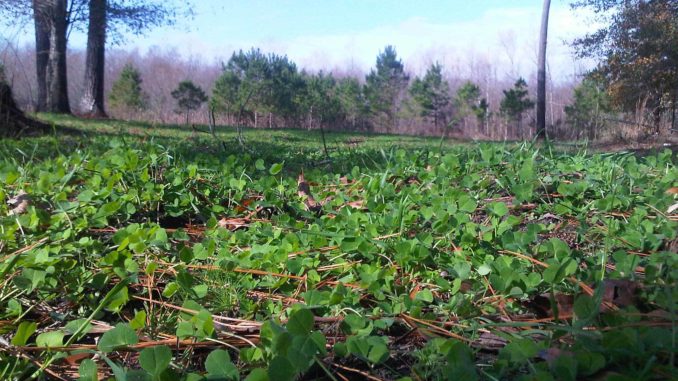
Cool-season food plots vary over a wide range of seed and forage varieties, but perennial clovers are some of the best food-plot varieties to use. Clover is known for providing a high-protein food source, and the deer just love it.
Since clovers are legumes, they are also nitrogen-fixating plants. Legumes convert atmospheric nitrogen to a usable form of ammonia through a symbiotic bacterial relationship on their root nodes. Elemental nitrogen is a critical nutrient for all living organisms; it is responsible for a laundry list of cellular processes. New plantings of clover require the seeds to be inoculated prior to planting.
Often, seed will be pre-inoculated from the seed supplier, eliminating the need to go through the inoculation process. But don’t let the similar price fool you. Fewer seeds will be found in the seed bag, and more seed will need to be purchased to plant the correct seeding rate. Basically, the seed-inoculation coating increases the mass of the seed particle, significantly reducing the number of seeds in each bag. Make sure to adjust planting rates accordingly when using coated or uncoated seeds.
If seeds lack the pre-inoculated coating, the proper bacteria should be purchased and incorporated onto the seed just prior to planting. The rhizobium bacteria will be specific for the type of legume being planted, and the correct strain culture intended for clover or any of the other legumes being planted. It only takes a little preparation and time to get the seeds ready for planting. Mix inoculants with a sticking agent, such as sugar water, a sugary soda, or the best choice, milk. The sugars combine with the bacterium and quickly adhere to each seed as it begins to dry. Each seed should be fully-coated and then allowed to dry in a cool, shady place. Seed should be planted within 24 hours after the inoculation process is complete.



Be the first to comment